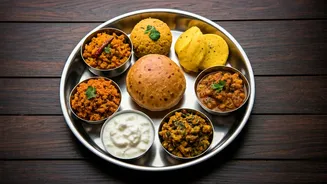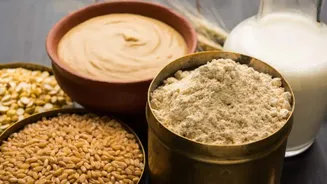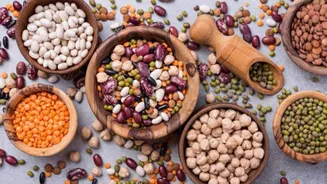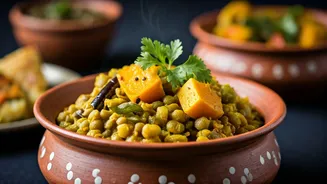Regional Culinary Tapestry
India's culinary landscape is as diverse as its geography. Each region boasts unique flavors, ingredients, and cooking methods, shaped by local traditions,
climates, and resources. North Indian cuisine is famous for its rich, creamy curries, often featuring ingredients like ghee (clarified butter), nuts, and dairy. Dishes such as butter chicken, palak paneer (spinach and cheese), and various types of tandoori preparations (cooked in a clay oven) are popular. Moving south, the emphasis shifts to rice-based dishes, coconut milk, and seafood. Dosas (thin crepes), idlis (steamed rice cakes), and sambar (lentil-based vegetable stew) are staples. The East of India presents influences from Bengal with the use of mustard oil and fish dishes. West India showcases a blend of flavors, from the spicy curries of Maharashtra to the vegetarian delicacies of Gujarat. This regional diversity underscores the extraordinary richness of Indian food.
Essential Indian Spices
Spices are the heart and soul of Indian cooking, infusing dishes with complex aromas and flavors. They are not merely additives but essential components that define the character of a dish. Turmeric, with its vibrant yellow hue, is a powerful anti-inflammatory and adds an earthy taste. Cumin, both ground and as seeds, provides a warm, slightly bitter flavor. Coriander, either as seeds or ground, lends a citrusy freshness. Garam masala, a blend of various spices, typically includes cardamom, cloves, cinnamon, and pepper, enhancing depth. Chili peppers, ranging from mild to intensely hot, contribute heat and depth, along with flavors. Ginger and garlic are essential aromatic ingredients used as a base for many dishes. Asafetida, a pungent resin, often used in vegetarian dishes, adds a savory umami flavor. These spices, when expertly combined, create the distinct flavor profiles that have made Indian cuisine world-renowned. The precise blend and use of spices vary according to regional preferences and specific dishes.
Popular Indian Dishes
Several Indian dishes have become globally recognized for their deliciousness. Butter chicken, originating from the Northern region, combines tender chicken in a creamy tomato-based sauce, and remains a top choice. Biryani, a flavorful rice dish often made with meat or vegetables, showcases layers of rice and the chosen ingredient, seasoned with aromatic spices. Samosas, crispy fried pastries filled with spiced potatoes and peas, are popular snacks. Dosa and idli, Southern Indian delicacies, offer satisfying breakfast options with their fluffy texture and delicious side dishes like sambar and chutney. Palak paneer, a vegetarian favorite, combines spinach and paneer (Indian cheese) in a rich sauce. Naan, a soft, leavened bread, is perfect for scooping up curries. Each dish offers a unique taste, reflecting the diverse culinary influences and traditions found across India. These dishes provide a delicious introduction to the complex flavors and textures of Indian cuisine.
Cooking Techniques Uncovered
Indian cooking involves several distinct techniques. Tadka, a process of tempering spices in hot oil or ghee, unlocks their flavors, adding depth to the dish. Grinding spices, either fresh or dry, is an essential step, helping create complex flavor profiles. Slow cooking is a favored method, allowing ingredients to meld and flavors to develop. Frying, both deep and shallow, is used in numerous preparations, such as samosas and pakoras. Roasting, particularly in tandoors (clay ovens), is vital for dishes like tandoori chicken. Steaming is employed to make idlis and momos. The precise technique chosen depends on the dish and the regional style. Mastering these techniques is fundamental to creating authentic Indian cuisine. Understanding the importance of ingredient preparation and cooking methods contributes to the richness and authenticity of Indian dishes.














